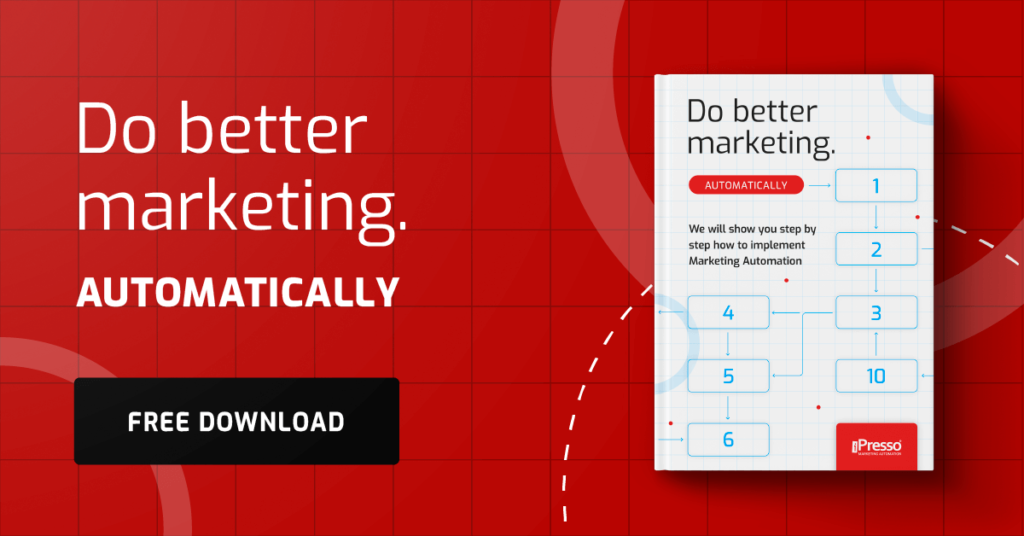“Product back in stock” notification that sells. How to optimize content and timing to recover maximum sales? [analysis + templates]
![“Product back in stock” notification that sells. How to optimize content and timing to recover maximum sales? [analysis + templates]](https://marketingautomagic.com/wp-content/uploads/2025/09/16-09-Blog-770x470.webp)
Product out of stock? All is not lost! You can recover sales—create “Back in Stock” scenarios and send automatic notifications when the product is available again.
Attract customers like a magnet
Don’t want your customers to go to the competition? Sending a notification about product availability increases the chance that they will use your services.
Wondering how this is possible? All you have to do is add a product feed (a file containing the most important information about your products) to the Feed Manager from iPresso. When visiting a page with an unavailable product, interested customers will see a button – “notify me when the product is available.” The potential customer will enter their email address in the form. When the stock status is updated, the system will automatically send a notification.
Would you like to see how it works with a specific example?
“Back in Stock” scenario for a shoe store:
The customer browses products and wants to buy navy blue sandals. They also see another option available—in black—but when they click on it, a message appears saying that this model is already sold out. After thinking it over, the buyer decides that black sandals would go well with most of their outfits, so they click on the link: “Notify me when the product is available” and enters their email address. The iPresso system assigns the customer to a segment. After some time, e-commerce employees update the inventory and many products are back in stock. The customer automatically receives an email with the title: “Hey Adam, the black Bright sandals are available again!”. You can prepare a message with dynamically changing content, so that Adam will see a notification with product recommendations tailored specifically to his preferences.
After the package is shipped and received, the buyer receives an email with recommendations for similar products from the summer collection. Satisfied with his sandals, he adds another color to his cart and also chooses beach flip-flops. He also fills out an NPS survey after the purchase and recommends the company.
Let’s now analyze what made the customer buy the products and not be discouraged by the lack of stock:
- Personalization – if the recipient received generic content, it would not arouse their interest and they would probably ignore the email.
- Real-time action – notifications about the availability of goods cannot be sent with a delay. After all, you don’t want to disappoint a potential customer by telling them that their product is sold out again.
- Segmentation – thanks to segmentation and knowledge about a given user, the iPresso system sent notifications only to selected people.
- Additional recommendations – satisfaction with purchases and personalized suggestions for similar products encouraged the customer to visit the online store again.
“Price reduction” scenario – when price becomes a selling point
Every company has customers who are very price-sensitive and will not buy anything without a promotion. In iPresso, you can quickly create a “Price Drop” scenario that will send special notifications only to those selected people. Let’s illustrate this with an example of an e-commerce store selling sweets:
A buyer selects several products on sale. They also browse chocolate bars. Unfortunately, none of them are on sale, so they don’t add them to their cart. A week later, the store offers price reductions in various categories. The sale includes almost all chocolate bars, so a scenario is automatically triggered that sends messages to segments (people interested in specific categories and price-sensitive). The customer reads the email and makes another purchase.
Prepare “Back in Stock” and “Price Drop” campaigns using various communication channels. Planning a seasonal sale? Prepare a scenario that will send an SMS to all customers on the day the sale starts. Don’t forget about length restrictions – write specific, short slogans and provide shortened links. For price-sensitive customers, it is most important to emphasize the amount of savings in the content. “Save $10 when you buy this product: chocolate heart box” works better than general slogans.
Summary
Effective scenarios for re-available and discounted products are not just notifications. They allow you to win back customers and significantly increase sales. The keys to success are precise segmentation, content personalization, and real-time messaging.
Remember: every unused moment of product unavailability is a lost sales opportunity. With the right tools, you can turn this situation into a competitive advantage.
Fill out the brief and use Marketing Automation to build scenarios that will help you sell more.



